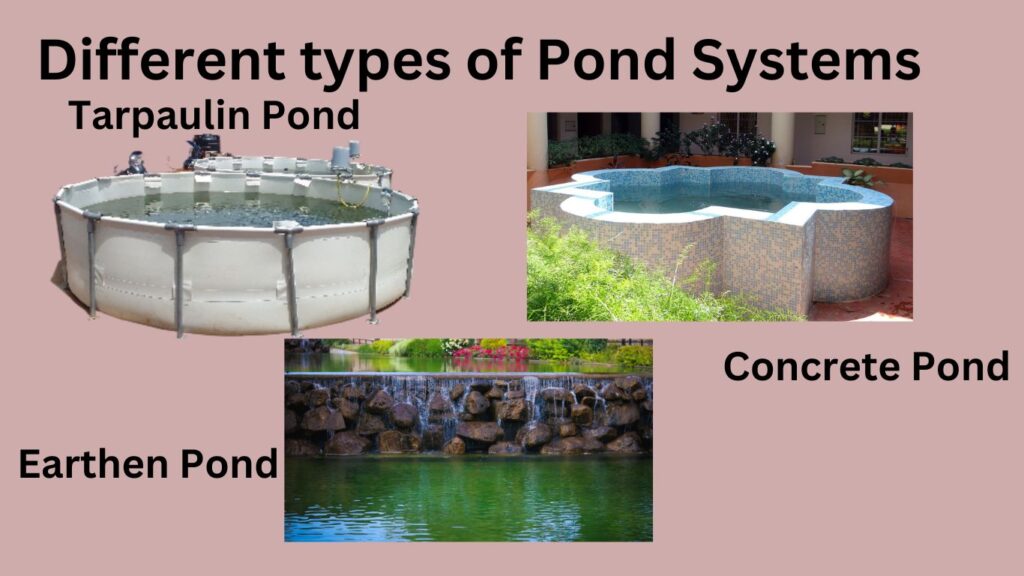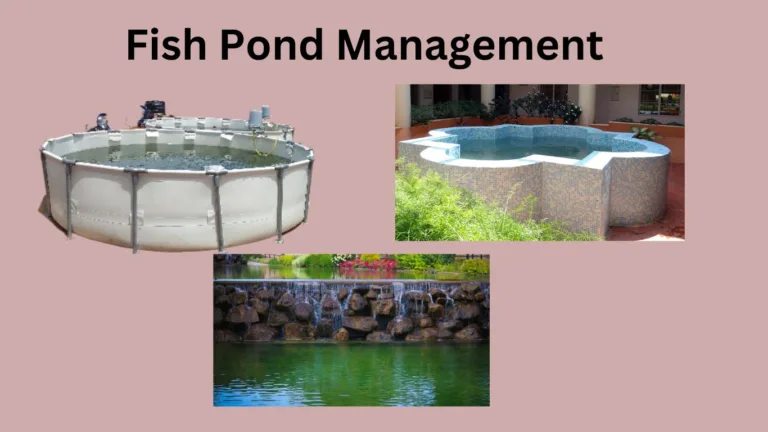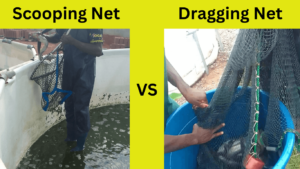Fish pond management is essential for both small-scale operations and experienced fish farmers seeking to optimize productivity and make the ultimate profit.
Proper pond management encompasses a range of factors, including location selection, pond design, water quality maintenance, fish species selection, stocking strategies, feeding techniques, disease prevention, harvesting methods, and marketing strategies.
In this comprehensive guide, we’ll go deep into each of these aspects in detail, providing you with valuable insights and practical tips to help you succeed in your fish farming venture.
1. Choosing the Right Location
Selecting the ideal location for your fish pond is the first crucial step in successful fish pond management. Several factors should be considered when evaluating potential sites. These include:
Sunlight Exposure and Shade
- Fish ponds should receive adequate sunlight for optimal photosynthesis, which is essential for the growth of phytoplankton and aquatic vegetation, forming the base of the pond’s food chain.
- However, excessive sunlight can lead to elevated water temperatures and increased algae growth, which can cause fish mortality. This necessitates the provision of shade through natural or artificial means, such as tree cover, shade structures, and a greenhouse. You may also use shade canopy which is very effective.
Accessibility to Water Sources
- Access to a reliable water source is essential for pond water and maintaining proper water levels.
- Ideally, choose a site with access to clean, uncontaminated water sources, such as groundwater, streams, or well water.
Soil Quality and Composition
- Conduct soil tests to assess soil quality and composition, as this will impact pond construction and water retention.
- This is important if you are constructing an earthen pond. But it doesn’t matter much for other ponds such as tarpaulin ponds, concrete ponds, and plastic ponds.
- Sandy soils may require additional lining to prevent seepage, while clay soils may hold water more effectively but may also be prone to excessive compaction.
2. Pond Design and Construction
Once you’ve identified a suitable location, careful design and construction are vital for creating a functional and efficient fish pond.
Size and Depth Considerations
- The size and depth of the pond will depend on various factors, including the intended fish species, stocking density, and available space.
- Larger ponds generally offer more stable water conditions and greater stocking capacity but require more extensive construction, maintenance, and cost.
The Shape of the Pond
- Pond shape can affect water circulation, sediment accumulation, and overall efficiency.
- Common shapes include circular, rectangular, and irregular shapes, each offering unique advantages and disadvantages.
Construction Materials
- Common construction materials for fish ponds include earth, clay, concrete, and synthetic liners.
- The materials also vary depending on the type of pond. For instance, with a concrete pond, you need cement, bricks/blocks, water, iron rods, and others.
- With a tarpaulin pond, you need synthetic, frame (e.g metal, PVC, wood, etc)
- Each material has its own set of advantages and considerations, such as cost, durability, and water retention properties.

Incorporating Aeration Systems
- Aeration is essential for maintaining adequate oxygen levels in the pond, particularly during periods of high stocking density or low oxygen availability.
- Aeration systems, such as aerators, diffusers, and fountains, can help improve water circulation and oxygenation, promoting fish health and productivity.
3. Water Quality Management
Maintaining optimal water quality is critical for the health and growth of fish in your pond. Several factors can influence water quality, including pH levels, temperature, dissolved oxygen, ammonia levels, and nutrient concentrations.
Monitoring pH Levels
- pH levels should be regularly monitored and maintained within the optimal range for fish health, typically between 6.5 and 8.5.
- Fluctuations in pH can affect nutrient availability, toxin levels, and the efficacy of chemical treatments.
Controlling Algae Growth
- Algae blooms can deplete oxygen levels, cause pH fluctuations, and create unsightly water conditions.
- Strategies for controlling algae growth include nutrient management, mechanical removal, biological control methods, and the use of algaecides or herbicides as a last resort.
Oxygenation Techniques
- Adequate oxygen levels are essential for fish respiration, metabolism, and overall health.
- Oxygenation techniques include aeration, surface agitation, and the use of oxygen-generating plants such as water hyacinth or hornwort.
Temperature Regulation
- Fish species have specific temperature requirements for optimal growth and metabolism.
- We have been experiencing high fish mortality during a very hot weather condition.
- Measures such as shading, water depth, and water exchange can help regulate water temperature and minimize temperature fluctuations.
4. Fish Species Selection
Choosing the right fish species is crucial for the success of your fish farming venture and fish pond management. Consider the following factors when selecting fish species for your pond:
Native vs. Exotic Species
- Native species are well-adapted to local environmental conditions and may require less intensive management.
- Exotic species may offer higher market value or growth rates but may also pose ecological risks if they escape or become invasive.
- The exotic species may face challenges in the environment in which they are brought. Sometimes rearing through a greenhouse or indoors may help.
Compatibility of Species
- Consider the compatibility of different fish species in terms of feeding habits, aggression levels, and habitat preferences.
- Some species may coexist harmoniously, while others may compete for resources or exhibit predatory behavior towards one another.
- Those fish that cannot coexist harmoniously may have a high cannibalism rate in their pond
Growth Rates and Market Demand
- Choose fish species with desirable growth rates and market demand to maximize profit.
- Research local market trends and consumer preferences to identify lucrative opportunities for fish sales.
- Use local media and social media to promote your fish produce.
Disease Resistance
- Select fish species that are known for their resistance to common diseases and parasites prevalent in your region.
- Disease-resistant strains or genetically improved breeds may offer added protection against health risks.
- Always check your fish to ensure there are no signs or symptoms of disease.
- Try to control the disease at an early stage.
- Always add salt and other medication to boost the immune system of the fish.
5. Stocking and Population Control
Proper stocking and population control are essential for maintaining balanced ecological dynamics and maximizing fish production in your pond.
Calculating Stocking Densities
- Stocking densities should be carefully calculated based on factors such as pond size, water quality, fish species, and intended harvest size.
- Overstocking can lead to overcrowding, stunted growth, increased competition for resources, heightened susceptibility to diseases, and also increased cannibalism.
Gradual Stocking Approach
- Adopt a gradual stocking approach to allow the pond ecosystem to adjust to the presence of new fish.
- Start with a small initial stocking and gradually increase the fish population over time as the pond matures and water quality stabilizes.
Thinning Out Excess Population
- Periodically assess fish growth and population dynamics to identify overcrowding and potential imbalances.
- Implement selective harvesting or culling techniques to thin out excess population and maintain optimal stocking densities.
- Always do fish sorting or grading to ensure uniform growth and reduce cannibalism
Monitoring Growth and Health
- Regularly monitor fish growth rates, feed conversion ratios, and overall health indicators such as activity levels, appetite, and coloration.
- Keep detailed records of feeding regimes, water quality parameters, and any observed signs of stress or disease.
6. Feeding Strategies
Proper feeding practices are essential for promoting healthy growth and maximizing feed efficiency in your fish pond. You can use automatic feeding system in your farm.
Choosing the Right Feed
- Select high-quality commercial feeds formulated specifically for the nutritional needs of your target fish species.
- Consider factors such as protein content, digestibility, pellet size, and floating vs. sinking feeds.
- Check out more about different types of feed and the ideal one for your fish
Feeding Frequency and Quantity
- Establish a regular feeding schedule based on the nutritional requirements and feeding behavior of your fish species.
- Avoid underfeeding or overfeeding by carefully monitoring feed intake and adjusting feeding rates accordingly.
- You the responsive feeding method to feed your fish. This is poring a little at a time and observing how the fish react to the feed until you see they are satisfied
Avoiding Overfeeding
Overfeeding can lead to water quality issues, excessive nutrient loading, and increased risk of disease outbreaks. It can also lead to fish mortality.
Conclusion
Successfully managing a fish pond requires a combination of knowledge, dedication, and careful planning.
By implementing the tips outlined in this guide, you can enhance the productivity of your pond and ensure the health and well-being of your fish stock.
Remember, continuous monitoring and adaptation are key to long-term success in fish farming. So take charge and enjoy the rewarding journey of fish pond management




Aw, this was a very nice post. Spending some time and actual effort to generate a superb article… but what can I say… I put things off a whole lot and don’t seem to get anything done.
вычегда график работы вакансии на катайском
насосном заводе подработка
библиотекарем для студента
работа для водителя сзао работа в воронеже
руки в руки
I’m impressed, I have to admit. Rarely do I encounter a blog that’s equally educative and entertaining, and let me tell you, you have hit the nail on the head. The issue is something which too few folks are speaking intelligently about. I am very happy I stumbled across this in my search for something relating to this.
I enjoy looking through a post that can make men and women think. Also, many thanks for allowing for me to comment.
I used to be able to find good information from your blog posts.
Hi there! I’m at work surfing around your blog frommy new iphone 3gs! Just wanted to say I love readingthrough your blog and look forward to all your posts!Carry on the excellent work!
I was looking through some of your blog posts on this website and I
believe this internet site is rattling informative!
Retain putting up.!
Hello there, just became aware of your blog through
Google, and found that it is truly informative. I am gonna watch out for
brussels. I’ll appreciate if you continue this in future.
A lot of people will be benefited from your writing.
Cheers! Escape rooms hub
Have you ever thought about publishing an ebook or guest authoring on other blogs?
I have a blog centered on the same subjects you discuss and would really like to have you share some stories/information. I know my subscribers would enjoy your work.
If you are even remotely interested, feel free to send me an e-mail.
торт москва на маяковской официальный 1 тонна металлолома цена москва новый пешеходный маршрут
на карте москвы ооо старое такси москва отзывы
tablettes commander en ligne Zydus Spiez ¿Es necesario contar con una receta para comprar medicamentos?
My brother suggested I might like this web
site. He was totally right. This post truly made
my day. You can not imagine simply how much
time I had spent for this information! Thanks!
Hello just wanted to give you a quick heads up. The text in your content seem to be running off the screen in Opera.
I’m not sure if this is a formatting issue or something to do with browser compatibility but I thought I’d post to let you know.
The design look great though! Hope you get the issue solved soon.
Many thanks
Thank you so much for informing me. I will get IT expert to work on it for me
I pay a quick visit everyday a few blogs and information sites to read articles, however this blog provides
feature based content.
Thank you
Very good website you have here but I was wondering if you knew of any
message boards that cover the same topics discussed in this article?
I’d really love to be a part of group where I can get suggestions from other knowledgeable people that share the same interest.
If you have any suggestions, please let me know.
Thanks!
The only groups I know and belong to are on social media, some are on Facebook, Twitter, LinkedIn, Reddit, and Quora. If you are interested and have accounts for some of them I may share their links with you.